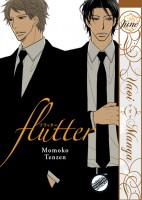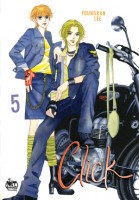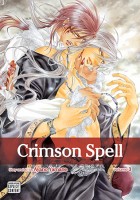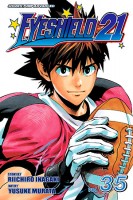My News and Reviews
Another three posts last week! It’s the end of June, so I decided to have a Juné Manga Giveaway. The winner will be announced on Wednesday, so there’s still some time left to enter for a chance to win a copy of Momoko Tenzen’s boys’ love one-shot Flutter. Last week I also took a closer look at the two Gengoroh Tagame manga recently published by Bruno Gmünder, Endless Game and Gunji. (And speaking of Bruno Gmünder, more titles for its Gay Manga line have been announced! Look for Mentaiko Itto’s Priapus, Takeshi Matsu’s More and More of You, and Tagame’s Fisherman’s Lodge in English later this year.) Finally, I posted a review of Kaoru Ohno’s historical novel Cage on the Sea which is about the survival and eventual repatriation of the Japanese holdouts on Anatahan Island after World War II. It was a story that was sensationalized in the 1950s, but Ohno’s thoroughly researched novel is a much more nuanced portrayal of the events and people involved.
Quick Takes
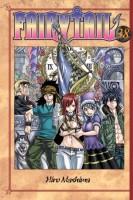 Fairy Tail, Volume 38 by Hiro Mashima. While the battles and challenges could be entertaining, I’ll admit that I had started to grow a little weary of the Grand Magic Games arc of Fairy Tail. Thankfully, a secondary (which has now become primary) plot was introduced which has much higher stakes than who will be declared the winner of the tournament. The possibility of the world being destroyed by the return of the dragons is a pretty big deal, after all. The lengthy buildup of the Grand Magic Games pays off in this volume though as the tournament reaches its conclusion. Actually, I think it’s one of the better volumes of Fairy Tail to have recently been released. Most of it is devoted to the various battles which are taking place, the Guild members showing just how much they’ve grown and how strong they’ve become in a very dramatic fashion. Friendship, loyalty, and teamwork have always been vital to Fairy Tail, but it really shows in this volume. Even though there is a focus on the action and fighting, there are also some important plot twists and story developments in the thirty-eighth volume, too.
Fairy Tail, Volume 38 by Hiro Mashima. While the battles and challenges could be entertaining, I’ll admit that I had started to grow a little weary of the Grand Magic Games arc of Fairy Tail. Thankfully, a secondary (which has now become primary) plot was introduced which has much higher stakes than who will be declared the winner of the tournament. The possibility of the world being destroyed by the return of the dragons is a pretty big deal, after all. The lengthy buildup of the Grand Magic Games pays off in this volume though as the tournament reaches its conclusion. Actually, I think it’s one of the better volumes of Fairy Tail to have recently been released. Most of it is devoted to the various battles which are taking place, the Guild members showing just how much they’ve grown and how strong they’ve become in a very dramatic fashion. Friendship, loyalty, and teamwork have always been vital to Fairy Tail, but it really shows in this volume. Even though there is a focus on the action and fighting, there are also some important plot twists and story developments in the thirty-eighth volume, too.
 My Love Story!!, Volume 1 written by Kazune Kawahara and illustrated by Aruko. I absolutely adored the first volume of My Love Story!!—it’s funny and charming, and the characters are incredibly amusing and endearing. Although Takeo is heroic, enthusiastic, loyal, manly, and strong, he’s not traditionally good-looking, so people often overlook his better qualities. He falls in love easily, but all of the girls he likes fall for his attractive best friend Suna instead. (So far, Suna’s turned them all down, though.) But when Takeo saves a girl named Yamato from a groper on the train it seems as though his chance at love has finally arrived, if he isn’t too dense to realize it, that is. Takeo’s developing romance with Yamato is delightful, but his close friendship with Suna is marvelous, too. I’m not sure for how long the creators will be able spin the series’ basic premise without it feeling drawn out, but the manga is currently still ongoing at six volumes in Japan. Regardless, I’m looking forward to the next volume immensely; My Love Story!! is easily one of my favorite manga debuts of 2014.
My Love Story!!, Volume 1 written by Kazune Kawahara and illustrated by Aruko. I absolutely adored the first volume of My Love Story!!—it’s funny and charming, and the characters are incredibly amusing and endearing. Although Takeo is heroic, enthusiastic, loyal, manly, and strong, he’s not traditionally good-looking, so people often overlook his better qualities. He falls in love easily, but all of the girls he likes fall for his attractive best friend Suna instead. (So far, Suna’s turned them all down, though.) But when Takeo saves a girl named Yamato from a groper on the train it seems as though his chance at love has finally arrived, if he isn’t too dense to realize it, that is. Takeo’s developing romance with Yamato is delightful, but his close friendship with Suna is marvelous, too. I’m not sure for how long the creators will be able spin the series’ basic premise without it feeling drawn out, but the manga is currently still ongoing at six volumes in Japan. Regardless, I’m looking forward to the next volume immensely; My Love Story!! is easily one of my favorite manga debuts of 2014.
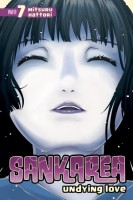 Sankarea: Undying Love, Volume 7 by Mitsuru Hattori. Bub’s condition continues to decline, so Rea has decided to leave for the ZoMA research facility, hoping that her unusual form of zombism will provide a clue to save him. (Is it sad that an undead cat is actually my favorite character in Sankarea?) Chihiro isn’t about to let her go on her own though, in part because he still feels responsible for Rea and wants to protect her, but also because he’s very interested in visiting the “zombie holy land.” Sankarea is a quirky series which tries to balance horror and romantic comedy. This volume actually succeeds fairly well in that. Chihiro has always expressed interest in zombie girls, and he is very excited to meet more of them at ZoMA, which causes him to reevaluate his relationship with Rea. Does he like her simply because she’s a zombie? Would he still like Rea even if there was a way to revive her? Considering Chihiro’s reactions to the other zombies, I could actually see Hattori going either way with the story. The seventh volume is a solid addition to the series, and ends on a pretty intense cliffhanger.
Sankarea: Undying Love, Volume 7 by Mitsuru Hattori. Bub’s condition continues to decline, so Rea has decided to leave for the ZoMA research facility, hoping that her unusual form of zombism will provide a clue to save him. (Is it sad that an undead cat is actually my favorite character in Sankarea?) Chihiro isn’t about to let her go on her own though, in part because he still feels responsible for Rea and wants to protect her, but also because he’s very interested in visiting the “zombie holy land.” Sankarea is a quirky series which tries to balance horror and romantic comedy. This volume actually succeeds fairly well in that. Chihiro has always expressed interest in zombie girls, and he is very excited to meet more of them at ZoMA, which causes him to reevaluate his relationship with Rea. Does he like her simply because she’s a zombie? Would he still like Rea even if there was a way to revive her? Considering Chihiro’s reactions to the other zombies, I could actually see Hattori going either way with the story. The seventh volume is a solid addition to the series, and ends on a pretty intense cliffhanger.




